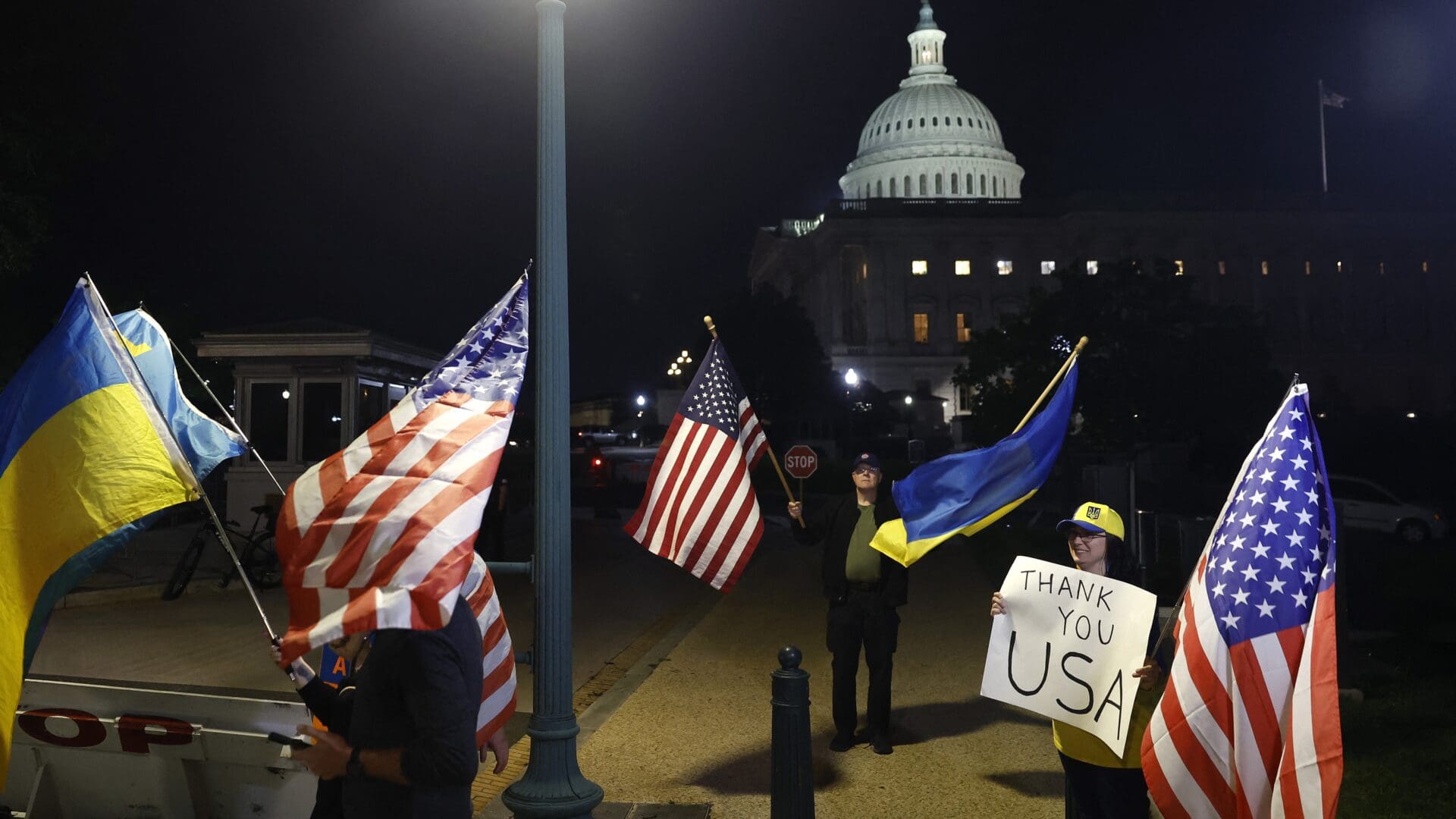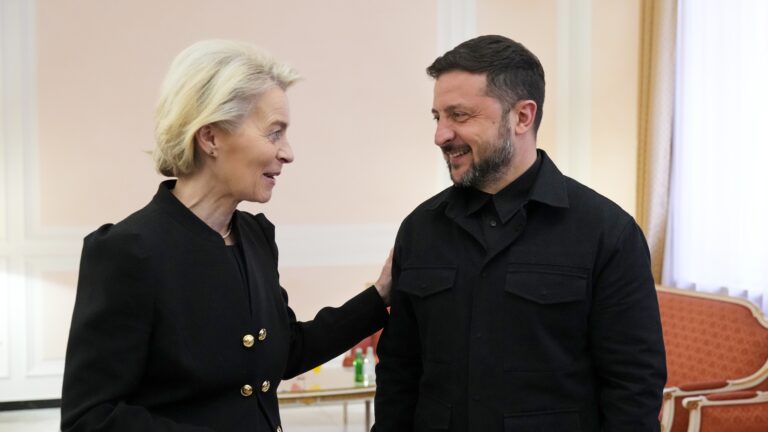With a resounding bipartisan majority of 79 to 18, the US Senate has passed a $95 billion aid bill aimed at supporting Taiwan, Israel, and Ukraine. This development resolves a months-long stalemate in the Congress, and upon receiving the signature of US President Joe Biden, new arms shipments can start.
Among Washington’s three allies, it is evident that Kyiv is the most in need of US support. The matter of aid for Ukraine has been extensively deliberated in both the House of Representatives and the Senate. ‘Make no mistake, America will deliver on its promise to act like a leader on the world stage, to hold the line against autocratic thugs like Vladimir Putin...We are showing Putin that betting against America is always, always a grave mistake,’ remarked Senate Majority Leader Chuck Schumer following the bill’s approval.
The legislation encompasses several key allocations:
$60.8 billion to replenish Ukraine’s resources
as it defends its territory against Russian aggression; $26.3 billion designated for Israel, alongside humanitarian aid for civilians residing in conflict areas, including Gaza; and $8.1 billion allocated for the Indo-Pacific region to enhance its defences against China.
Prior to the Senate vote, Ukrainian President Volodymyr Zelenskyy engaged in a telephone conversation with Joe Biden, during which the US President assured his Ukrainian counterpart of his swift approval of the proposal. This assurance suggests that Ukraine could soon receive additional Long-range Army Tactical Missile System (ATACMS) missiles, potentially bolstering the defence capabilities of the Ukrainian armed forces significantly. ‘Today’s result is that in the agreements on ATACMS for Ukraine, all the details have been finalized. Thank you, Mr. President, thank you, Congress, thank you, America,’ remarked Zelenskyy last Friday, following the bill’s passage in the House of Representatives.
The political significance of the bipartisan majority backing the bill to support Ukraine is unquestionable, especially amidst growing scrutiny of the effectiveness of the aid provided by the European Union and the United States to Kyiv. However, the tangible impact of US aid on the outcome of the conflict remains uncertain.
In recent months and weeks, Russian forces have been gradually but visibly advancing in eastern and southern Ukraine. Zelensky recently told NBC News that the Russian army aims to seize the Eastern Ukrainian town of Chasiv Yar before May 9, which marks Victory Day in Russia. The city holds significant strategic value, as its capture would
enable Russian forces to launch direct assaults on several key Ukrainian ‘fortress cities.’
Russian military analysts list Sloviansk, Kramatorsk, Druzhkivka, and Kostiantynivka as the ‘fortress cities’ in Ukraine’s east accessible from Chasiv Yar. The Washington-based Institute for War Studies (IWS) think-tank describes the cities as ‘the backbone’ of the Ukrainian army’s defence in the east.
In the days leading up to last week’s vote on the aid bill in the House, POLITICO Brussels provided a candid assessment of the situation in Ukraine, with the headline ‘Ukraine is heading for defeat.’ According to POLITICO opinion editor Jamie Dettmer, Ukraine’s predicament is growing increasingly dire, not only due to delays in Western arms deliveries but also because of the flagging morale among its soldiers.
‘Morale among troops is grim, ground down by relentless bombardment, a lack of advanced weapons, and losses on the battlefield. In cities hundreds of miles away from the front, the crowds of young men who lined up to join the army in the war’s early months have disappeared.’
Dettmer asserts that without a significant overhaul in Western military and financial assistance, Kyiv stands little to zero chance of repelling Russian forces.
But now it appears that the pivotal moment has arrived, and Ukraine will soon receive the necessary assistance from its primary ally, the United States. According to most analyses, Kyiv’s most pressing requirements include artillery shells to halt the advancement of Russian troops and anti-aircraft missiles to safeguard civilians and infrastructure from missiles, drones, and bombs. However, there is no guarantee that these needs will be met, as it largely hinges on the availability of stockpiles in Washington. Past experiences have shown that promised arms shipments may not reach Ukraine on time or at all. Volodymyr Zelenskyy recently highlighted this issue, citing the case of F–16 fighter jets promised to Kyiv a year ago—still missing.
According to The New York Times, the Pentagon has already put together a one billion dollar package that will be dispatched to Ukraine immediately upon Joe Biden signing the bill. This package will encompass shoulder-fired Stinger surface-to-air missiles, 155-millimeter shells, anti-tank guided missiles, battlefield vehicles, and ammunition for the High Mobility Artillery Rocket Systems (HIMARS), capable of launching ATACMS missiles.
According to the most realistic assessments, the current arms deliveries should
provide Ukraine with the means to sustain its defence throughout this year.
While some experts speculate that Ukrainian forces could potentially launch offensive manoeuvrers by the end of summer or early autumn, such projections seem more aspirational than grounded in reality. Nonetheless, the assistance is poised to contribute to stabilizing Ukraine’s defence lines, facilitating troop reorganization, and enabling strategic planning and preparation for operations in 2025.
With the acceptance of US support, another crucial aspect to consider is the status and trajectory of European assistance to Ukraine. In recent months, the impasse in the US legislature has prompted the European Union to endeavour to fill the void left by the absence of support from Washington. In Brussels, Member States’ leaders adopted a plan for EUR 54 billion in financial aid, while individual European countries have intensified their contributions to Ukraine’s war efforts. For instance, the UK recently announced a £75 billion defence boost, with the unofficial aim of augmenting support for their embattled ally. Similarly, Germany has recently committed to providing Ukraine with an additional Patriot air defence system.
Now that the US has reaffirmed its support for Kyiv, the focus shifts to whether the EU can sustain its momentum. This is particularly noteworthy as European elections are looming less than two months away, and the outcome will significantly impact whether pro-peace or pro-war MEPs will dominate the new European Parliament. Current forecasts indicate that the Identity and Democracy (ID) EP political group will emerge as the third-largest group over the next five years, and ID’s stance on Ukraine excludes further military aid for Kyiv. The uncertainty in Europe is felt overseas and in Kyiv as well, prompting U.S. Ambassador to NATO Julienne Smith to urge European allies to increase their support for Ukraine following the Senate vote.
Read more on the war in Ukraine:








